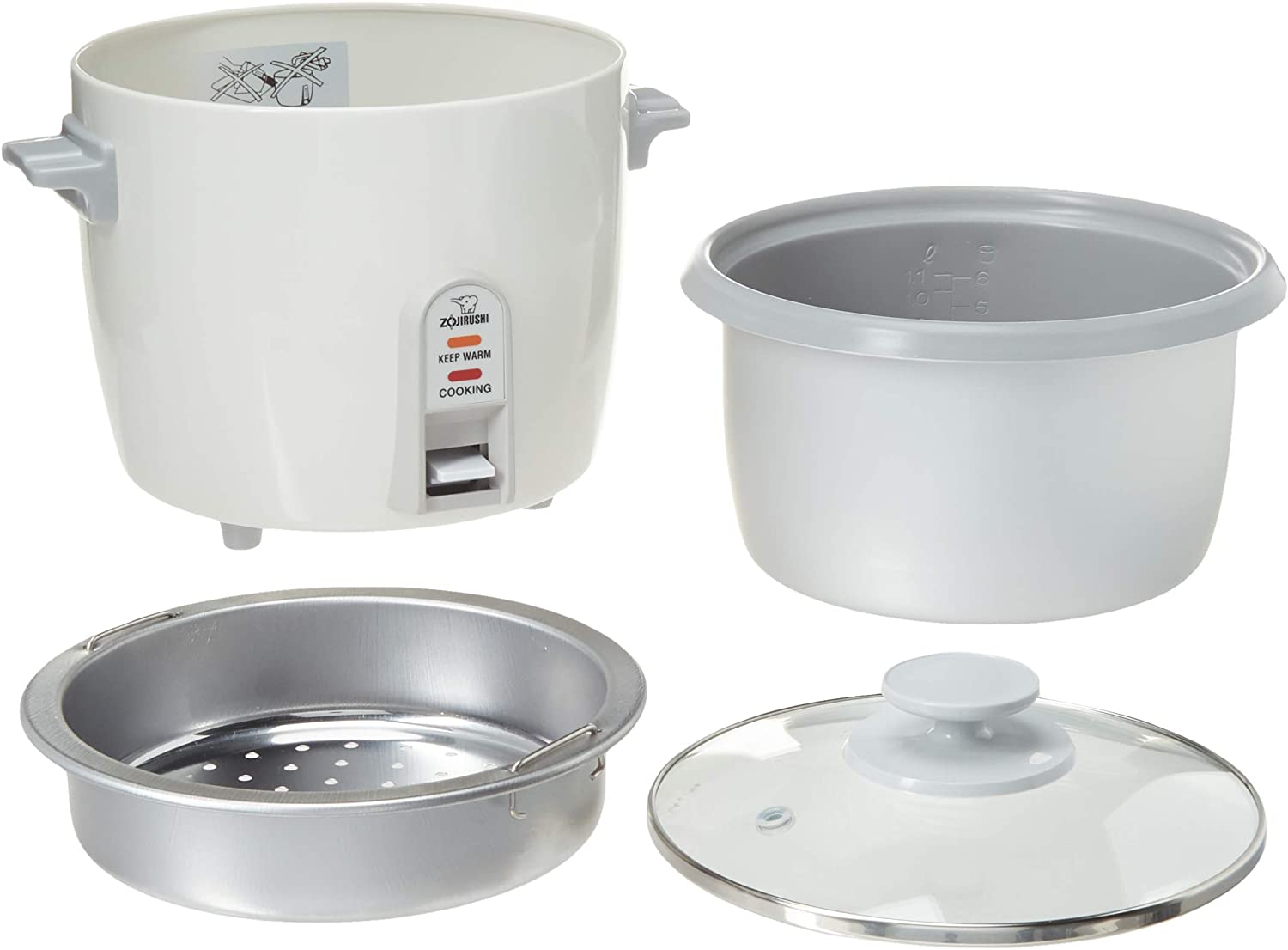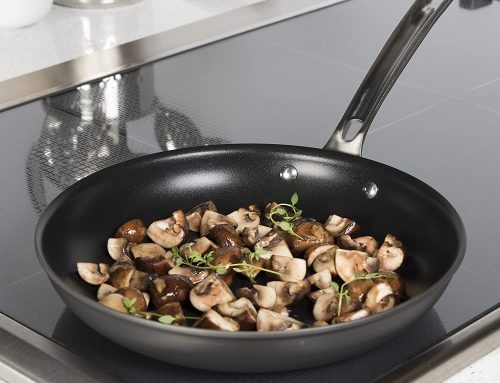Wash, We all hate it. while most pots and pans can be put in the dishwasher, unfortunately, that’s not an option with your rice cooker. So if you’ve been scratching your head and wondering ” what is the best way to clean a rice cooker “, then I have 3 amazing tricks I use to get great results without spending hours scrubbing in the sink.
So if you’re ready to make your life simpler, let’s get started!
One of the best things about a rice cooker is that it is not limited to just cooking rice. You can cook all kinds of dishes like stews, soups, and even banana bread. That makes it one of the most versatile kitchen appliances you can buy, this is great.
But there is a downside because some of these dishes can make the rice cooker very difficult to clean. Time to find out the best way to clean a rice cooker.
How to clean your electric rice cooker?
I love to use my rice cooker whenever I can. I also love to experiment when it comes to cooking food. So you can imagine some of the types of messages I’ve had to clean up over the years.
Cleaning up after cooking rice can be quite difficult, especially if it’s a starchy variety like Arborio rice, which almost always leaves a residue, more often than not. It’s a simple case of removing the inner pot and putting it in the dishwasher, not too much work.
Sometimes I like to give the whole rice cooker a full and deep clean involving the outer pot, inner pot, and other removable parts. But of course, you have to be careful when cleaning any electrical appliance so here’s what I doing.
Steps to follow to clean a rice cooker
- Unplug the rice cooker and let it cool completely. This is very important as some of the components can stay hot for a long time after cooking. While the outer wall will be cold you can burn your fingers on the inner parts. So I always leave my pot to cool down for at least 30 minutes after use.
- Remove the inner pot.
- Wash and clean the inner pot with dish soap and rinse well. For stubborn stains, you may need stronger cleaners (see below). If food remains on the bottom of the pot (especially rice), do not scrape them up with a spoon, as this will ruin the coating. Instead, put in hot water and let the pot soak for at least 10-15 minutes.
Although most parts of the rice cooker, such as the inner pot and other accessories, are dishwasher safe. You should never put the main body of the rice cooker in a dishwasher.
Hopefully, the reason for this is clear, but let me remind you that the sensitive electronics in most modern rice cookers don’t react well to hot water and cleaning chemicals.
How to clean the outside of your rice cooker?
When it comes to cleaning a rice cooker, cleaning the outer casing should only be done when you want to. I prefer to clean it at least once a week unless of course there has been a spill (soup is particularly bad for this), and food has gotten stuck to the outside.
You should remember that even cookers with sealed pushbuttons can be damaged by water ingress, and of course cookers with raised “separate” buttons are much more prone to damage, so be careful. Always check the manual to see if your cooker can be damaged by harsh cleaning chemicals. Most good brands come with clear cleaning instructions.
Once again, this is what I do when cleaning the outer skin.
- Moisten a cotton cloth and wipe the outer surface of the pot, never spray anything directly on the pot, always spray on the cloth first. Also, do not use strong abrasive cloth. Instead, a soft cotton cloth or microfiber cloth will give the best results without damaging the surface.
- Use a mild solution to remove stains and residue, then polish the surface
Once again, make sure you have allowed the unit to cool down completely before cleaning.
Cleaning tips to clean your rice cooker
As you can see, cleaning your electric rice cooker is quite simple. But it is a task that many of us put off. Like everything, the more you do it, the easier it will be, so don’t be tempted to leave your pot for long periods without giving it a good cleaning.
However, if you’ve ended up with a problem or burnt spots, here are some great tricks to help you get it sparkling again without spending too much effort.
You can pretty much keep your rice cooker performing at its peak and looking shiny by following these 3 simple tricks!
#1 Remove unpleasant odor with vinegar
Burnt food can leave behind an unpleasant odor that can also affect the taste of your dishes. It’s also hard to get rid of, and as I said above, you should avoid scraping it off in case it damages your pot. However, help is available in the form of a simple household item that almost everyone will have: vinegar!
To remove unpleasant odors, I use distilled vinegar mixed with water. Is that how it works?
- For the hot plate of the pot: dampen a cloth with the vinegar solution and then wipe the entire hot plate until the residue is removed.
- If the odor is affecting other components, carefully remove them from the body of the pot and soak them in the vinegar solution for at least 10-15 minutes.
- Rinse soaked parts with soap and water.
#2 Use lemon or Baking Soda
Baking soda is an excellent cleaning agent. All you need to do is add a tablespoon to your inner pot and then drizzle on some lemon juice. Watch in amazement as the solution bubbles up and the dirt disappears!
Because baking soda is an alkaline compound when combined with an acid like lemon juice, it produces carbon dioxide. These tiny bubbles of carbon dioxide gas get trapped in the soda, causing it to puff up or rise, taking the dirt with it. It’s a process known as cavitation, and it’s a powerful way to clean things. It’s even used to remove barnacles and debris from ships, which is powerful.
It’s also very safe and easy to do, just let it soak for about 5-10 minutes before rinsing.
You will be surprised by how effective the lemon and baking soda solution is!
#3 Let your rice cooker cool down before cleaning it
Letting the pot cool down after use for about 30 minutes will not only save you from accidents but will also make the device last longer.
Always remember to unplug the unit after cooking and let it cool down before washing. Submerging a hot inner pot in cold water can cause thermal stress that causes microcracks to form and can eventually break the pot. And of course, you won’t burn your fingers. Just remember to clean the hotplates and remove the inner pot and its accessories before washing them separately.
Summary on how to clean a rice cooker
The average rice cooker is a fairly simple device, so it doesn’t need a lot of care. Because of the variety of dishes you can cook in one, you need to know how to clean it properly, both for hygiene and maintenance reasons.
I want to have to buy a new pot just because I didn’t take care of the old one, and I’m sure you feel the same way.
Hopefully, the simple tricks and practical tips I’ve shared with you will make your kitchen provide years of trouble-free maintenance and great-tasting food.
Cleaning supplies are available and cheap to buy, so you have no excuse.
Happy cleaning!









Leave A Comment